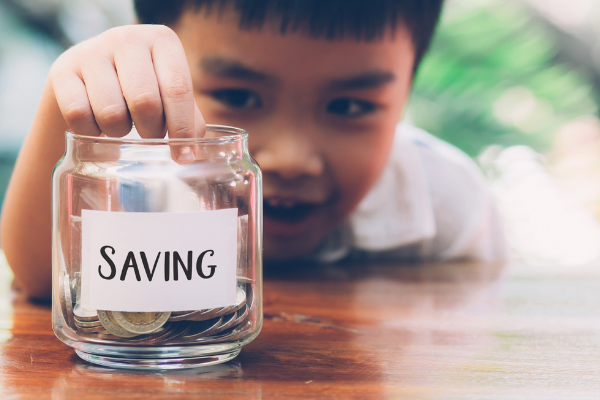
How do we teach financial literacy? As parents and educators, we want to make sure that kids have the tools they need to spend responsibly. Showing them how to manage money and become self-reliant is easier than you may think. Check out this collection of tips and activities to help teach financial literacy to kids!
What Is Financial Literacy?
Financial literacy is the key to your relationship with money. It’s how you are able to better understand and use tools like budgeting, money management, and investing.
Being financially literate means you know how to pay off debt, can create a working budget, and are able to use different types of financial resources to save money.
When Should Kids Learn About Financial Literacy?
When you teach financial literacy early, it means kids have a better chance of success. Believe it or not, financial literacy is an essential life skill. What you teach your kids now will help them manage money better as an adult. In fact, by age 7, most of our financial habits are already set.
Teaching financial literacy helps your child avoid pitfalls and create good money habits. Both teachers and parents can use these 16 fun and easy tips and activities to teach financial literacy to kids.
16 Fun Ways to Teach Kids Financial Literacy
Get started with these tips, lesson plans, printables, and activities to help teach kids financial literacy.
3 Ways to Teach Kids About Money
- Start with an allowance – Having an allowance will help teach kids that money isn’t an endless supply. Money has to be earned. By having an allowance, kids can learn the important skill of budgeting and how to make better choices when it comes to spending money.
- Open up a bank account – Opening up a kids account at your local bank or credit union is a great way for even younger kids to be able to see their money grow, or dwindle, as they make choices on whether to save or spend. Preteens can also use a debit card connected to their account to make purchases in stores or online.
- Earning their own money – Kids can earn their own money beyond just doing chores around the house. Yard work, babysitting, a garage sale, or a lemonade stand are all great ways to earn cash and handle money. By earning their own money, kids can choose to save it or put it towards something they really want.
4 Lesson Plans About Money
Show Me the Money | Teachers Pay Teachers
This plan is for the younger set, kindergarten and first grade, with over 70 pages of content.
U.S Currency | USCurrency.gov
Designed for grades 2-5, this “currency academy” is an interactive way to introduce kids to U.S. currency.
Money Math Lesson Plans | Education.com
These lessons will help teach things like purchasing items, making change, and identifying coin values.
Middle School Money Lessons | Practical Money Skills
These lessons for grades seven and eight include a teacher’s guide, student activities, PowerPoints, and presentations.
5 Money Printables
Printable Play Money | Teachers Pay Teachers
This printable money is a realistic way to let kids play with money in the classroom or at home.
Money Math Worksheets | Education.com
These printable worksheets are geared towards younger kids, from preschool to third grade.
Money Worksheets | K5 Learning
This set includes worksheets with everything from counting and recognizing coins to using money when shopping.
Balancing a Budget | Teachers Pay Teachers
Kids from third to fifth grade can learn how to balance a budget while strengthening their addition and subtraction skills.
Identifying & Counting Coins | Teachers Pay Teachers
This pack has tons of worksheets, games, and activities to help teach kids all about coins.
4 Fun Activities
- Biz Kid$ – This PBS show is geared towards middle schoolers and high schoolers. Financial literacy is taught through real-life topics. Watch the show online and then download the free printables for each episode.
- Needs & Wants Game – It’s important to show our children the difference between needs and wants. Needs are what we have to have, like food, water, medicine, and shelter. Wants are the extras, the fun stuff like toys and electronics. On one side of a piece of paper write “needs” and on the other write “wants”. Go around the house and have your child point out what is a need and what is a want, then write them down on that side of the paper.
- Free Comic Books – What’s more fun than a comic book? The Federal Reserve Bank of New York offers free comic books you can download or have them sent to you in the mail. They help kids understand concepts like saving and budgeting, gathering interest, and the economy.
- Money With Mak & G – This fun podcast is great for kids and adults alike. Thirteen-year-old twins Mak and G help teach a new financial lesson in each episode. Their dad jumps in at the end of each episode to give his insight as a financial planner and CPA. Listen to episodes with your kids during breakfast or on the way to school.
By helping kids understand the value of a dollar, you help put them on the right path.
Creating good money habits now will give kids a strong financial foundation all the way into adulthood.















































